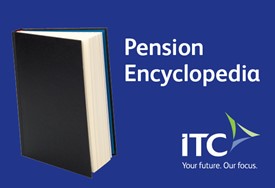Setting up or managing your pension can at times be overwhelming. There are so many products and terms, it can be hard to know for example the difference between your ARFs and AMRFs. Below we have compiled a list of regularly used pension terms and their meanings, that we hope will help you navigate your way through the jargon.
- Additional Voluntary Contribution (AVCs) - Typically additional contributions paid by a member of an occupational pension scheme in order to secure benefits over and above those set out in the rules of the scheme.
- Annuity - A guaranteed retirement income for life paid at stated intervals until a particular event (usually the death of the person receiving the annuity).
- Approved Minimum Retirement Fund (AMRF) - A post retirement investment fund for individuals under age 75 who do not meet the specified income amount (currently €12,700 per year) and wish for their residual retirement funds, after taking a retirement lump sum, to remain invested after retirement.
- Approved Retirement Fund (ARF) - An investment fund that allows you to continue to invest some or all of the benefits from your pension fund in retirement and take-out money as you need it, rather than buying an annuity.
- Member Benefit Statement - An annual statement of the benefits payable in respect of an individual on the occurrence of specified events, e.g., death, retirement etc.
- Buy Out Bond - The purchase by the trustees of a pension scheme of a bond in the name of a member following termination of service, or on the winding-up of a scheme. The bond is bought in substitution of the members rights under the previous pension scheme.
- Contributions - The amount a person contributes from their earnings to a pension scheme or from their company to their pension scheme.
- Defined Benefit Scheme - provides the member with retirement and death benefits based on final salary on their completed pensionable service.
- Defined Contribution Scheme - A person can contribute a portion of their salary to a pension scheme. Ideally, although not always, their employer also contributes, and these contributions are invested in a fund in order to provide retirement benefits.
- Drawdown - Pension drawdown is a way of using your pension pot to provide you with a regular retirement income either annually or when required. The income you get will vary depending on the fund’s performance and will be subject to the annual imputed distribution.
- Final Remuneration - The term used by Revenue for the maximum amount of earnings which it will permit to be used for the purpose of calculating maximum approvable benefits.
- Occupational Pension Scheme - A pension scheme set up by an employer to provide retirement and/or other benefits for employees. It is sometimes called a 'company pension scheme'.
- Pension Adjustment Order (PAO) - An order made following a decree of judicial separation or divorce whereby the court adjusts a member's pension rights in favour of their spouse/civil partner/qualified cohabitant or a dependent child.
- Personal Retirement Savings Account (PRSA) - A PRSA is a personal pension contract that you take out with an authorised PRSA provider. It is an investment product that you use to save for your retirement. PRSAs are a type of defined contribution account which qualifies for tax relief on contributions within Revenue limits.
- Qualifying Recognised Overseas Pension Scheme (QROPS) - is a pension scheme which can receive a transfer of UK pension benefits free of tax. (Subject to certain conditions)
- Statement of Reasonable Projection (SORP) - A statement projecting the likely future worth of a pension fund based on assumptions about future contributions paid in, investment returns on those contributions as well as existing monies, and the cost of buying an annuity (pension) when the member retires. SORPs are issued to members of defined contribution schemes and PRSA contributors at least annually. They should be used as a guide in assessing whether or not you are on track to meet your retirement savings goals.
- Small Self-Administered Scheme (SSAS) - is a tax-efficient investment scheme that is suitable for both employees and controlling directors. It allows you to enjoy the greatest level of control over the direction of your investments. (Subject to Revenue Rules)
- Standard Fund Threshold (SFT) - the limit that individuals are allowed to amass in their pension fund without having to pay tax on some of that fund when they access their pension benefits at retirement. The current limit is €2 million and any amount over that is subject to a tax liability at the 40% rate.
- Tax Free Lump Sum (TFLS) - The lump sum paid to the pension holder when the scheme is retired. Normally amounts to 25% of the scheme value subject to a maximum €200,000 (with up to a further €300,000 at 20% tax) or four times your final salary, depending on the chosen retirement option.
- Trusts - asset-owning vehicles which can provide for both current and future generations. They may be created for many reasons, such as family protection and long-term wealth preservation. All occupational pensions are set up under trust.
For further information, please speak to your Financial Advisor or email JustAsk@independent-trustee.com.
*Please note this content is the view of the author and not of Independent Trustee Company
